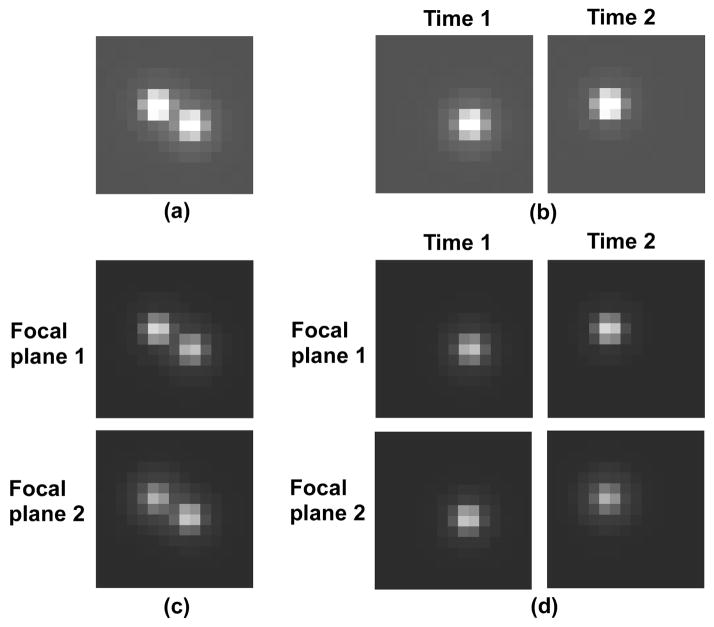Fig. 1.
Simulated images of a pair of like point sources in 3D space as acquired by (a) the SIM-SNG, (b) the SEP-SNG, (c) the SIM-MUM, and (d) the SEP-MUM imaging modalities. The point sources are deliberately simulated to be separated by a relatively large distance of 500 nm to clearly show the presence of a pair. The exposure time of each image is the same regardless of the modality. (a) The SIM-SNG modality abstracts the conventional fluorescence imaging setup which produces a single image of both point sources. (b) The SEP-SNG modality detects the two point sources separately in time and hence produces two images each capturing only one of the point sources. (c) The SIM-MUM modality uses two cameras to simultaneously detect the point source pair from two distinct focal planes, and hence produces two images each capturing both point sources. (d) The SEP-MUM modality combines separate detection with two-plane imaging and therefore produces a total of four images - two of one point source from the two distinct focal planes, and two of the other point source at a different time, but from the same two focal planes. In (c) and (d), the images are dimmer because the collected photons are split between the two focal planes.

